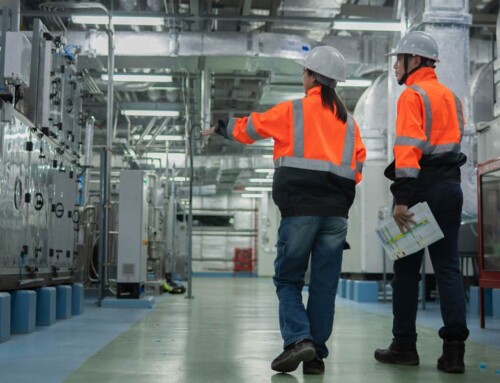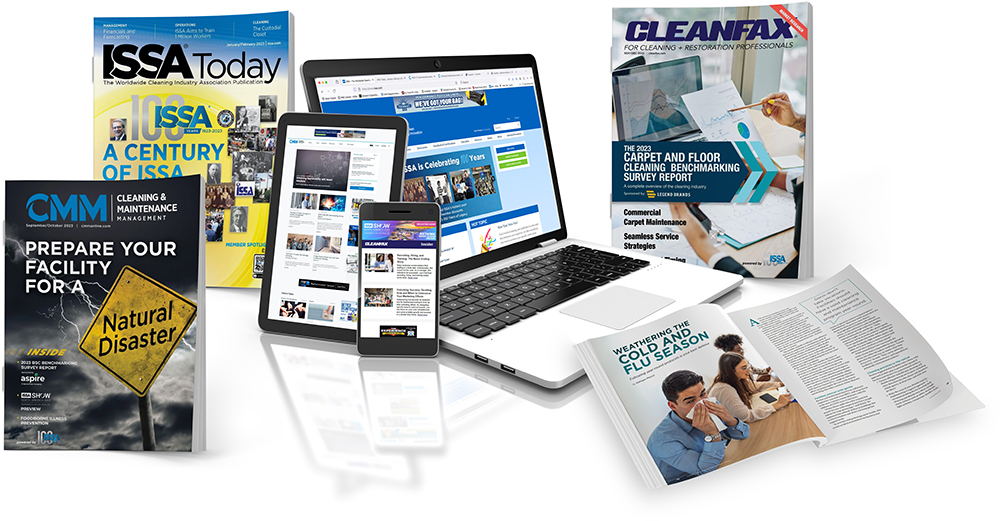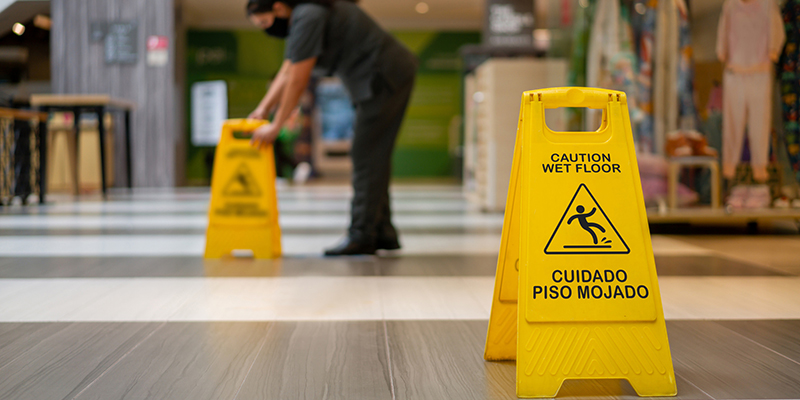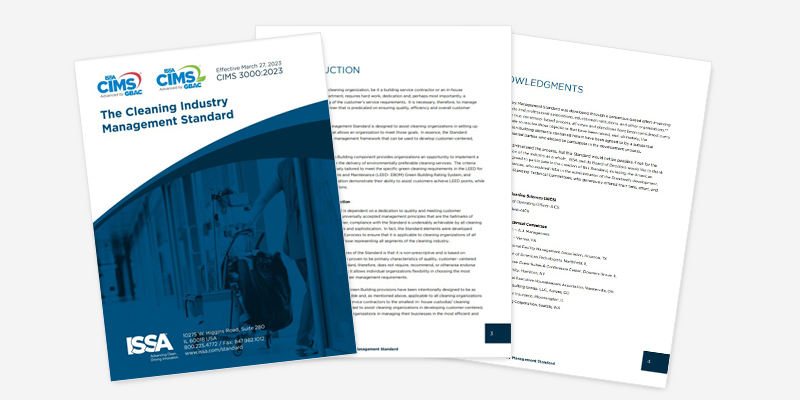Cleaning Schools: Best Practices for Healthier Learning Environments
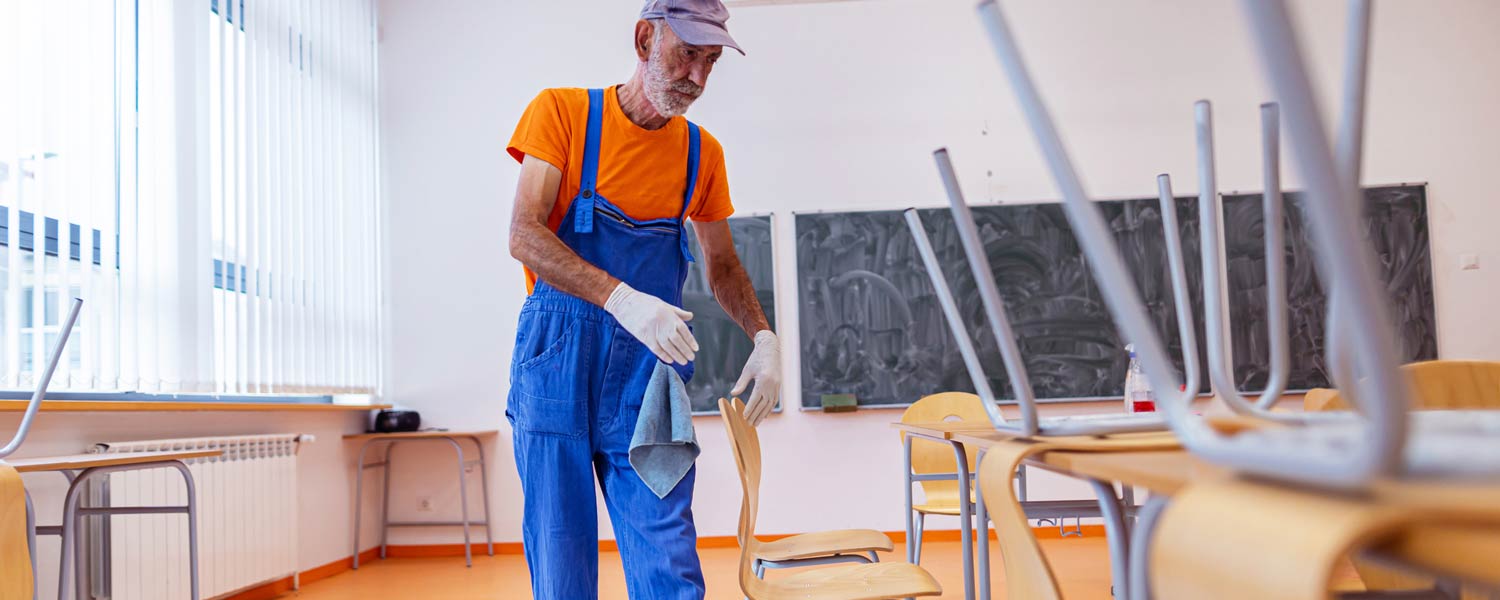
Why Cleaning Schools Is Crucial
Cleaning schools isn’t just about tidiness—it’s about health, safety, and learning outcomes. With hundreds or even thousands of students and staff passing through classrooms, cafeterias, and gyms every day, schools are high-traffic environments that can easily become breeding grounds for germs.
A clean school directly supports student performance, reduces absenteeism, and builds trust with families. As awareness of hygiene and indoor air quality grows, so does the expectation for visibly clean, properly maintained school facilities. And when done right, cleaning delivers measurable results. Learn how clean, healthy schools contribute to long-term success for students and staff at ISSA.com/value.
__________________________________________________
The Link Between Cleanliness and Student Success
Multiple studies link clean environments to higher academic achievement and better student behavior. According to the EPA, poor indoor air quality can negatively affect concentration and test scores.
Here’s how cleaning contributes to improved outcomes:
- Reduces illness and absenteeism by minimizing the spread of viruses and bacteria.
- Improves focus by reducing allergens and pollutants in the air.
- Enhances student behavior in well-kept, orderly environments.
- Promotes mental well-being, especially when students feel safe and cared for.
High-Touch Surfaces and Hot Spots in Schools
School facilities contain a variety of surfaces that require regular attention. Key areas include:
- Desks and chairs
- Door handles and light switches
- Restrooms and locker rooms
- Cafeteria tables and food prep areas
- Computer labs and shared tech
- Playgrounds and gym equipment
Creating a regular cleaning and disinfecting schedule, especially for these high-touch zones, is essential to maintaining a healthy school.
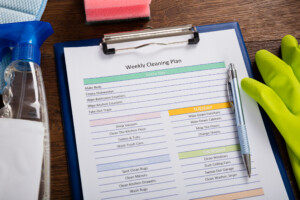
What Should a School Cleaning Plan Include?
To be effective, a school cleaning program should include:
- Routine Cleaning Protocols
Establish daily and weekly schedules for classrooms, hallways, and common areas. Use checklists to ensure consistency.
- Disinfection Strategy
Use EPA-approved disinfectants and follow proper dwell times. Prioritize areas where contamination risk is highest.
- Restroom Maintenance
Ensure soap dispensers are filled, and restrooms are sanitized multiple times a day.
- Floor Care
Implement routine vacuuming and mopping with products suitable for the flooring type and school environment.
- Staff Training
Well-trained custodial teams are the backbone of any successful cleaning plan. Ensure they are trained on proper cleaning techniques, safety, and the use of equipment. Learn how cleaning excellence creates measurable value across industries, including education.
Green Cleaning in Schools
Many schools are adopting green cleaning to reduce chemical exposure and support sustainability. Green cleaning programs use:
- Low-VOC and non-toxic products
- Microfiber cloths and mops
- HEPA-filter vacuums
- Dilution control systems to minimize waste
According to Green Seal, schools that use green cleaning programs not only create healthier spaces but can also reduce operating costs and improve indoor air quality.
The Role of Cleaning Staff in Student Health
Custodial teams are often underappreciated—but they are essential frontline defenders of public health. They help:
- Prevent the spread of illness
- Maintain a sense of order and pride in the school
- Support special education and medical accommodations by ensuring safe environments
Investing in training and recognition for cleaning staff is key to sustaining high performance.
Communication Builds Trust
Parents, staff, and students want to know that cleaning protocols are in place—and working. Here’s how schools can build transparency:
- Post daily or weekly cleaning schedules
- Display signage about disinfection protocols
- Provide updates in newsletters or at school board meetings
- Encourage feedback from teachers and families
Clear communication fosters confidence in the school’s commitment to health and safety.
Budgeting for Cleanliness
While schools often face budget constraints, investing in effective cleaning pays dividends in:
- Lower absentee rates
- Higher staff retention
- Improved public perception
- Reduced long-term maintenance costs
Utilizing metrics to track cleaning outcomes can help justify investments and guide smarter resource allocation.Understand how investing in cleaning helps prove the value of clean to school boards and administrators.
External Certification and Best Practices
Consider implementing certification programs or best-practice frameworks such as:
- Healthy Green Schools & Colleges – A program that offers guidance and verification for indoor environmental health.
- CIMS (The Cleaning Industry Management Standard) ) – A recognized framework for quality cleaning service management.
Visit Healthy Green Schools & Colleges to explore tools and resources.
Final Thoughts
Cleaning schools isn’t a back-of-house function—it’s a vital contributor to education and community health. When schools are clean, students are healthier, teachers can focus, and parents feel confident. By embracing effective, sustainable cleaning practices, educational facilities not only meet rising expectations but also foster environments where students thrive. Discover how smart cleaning practices add value in every setting.

